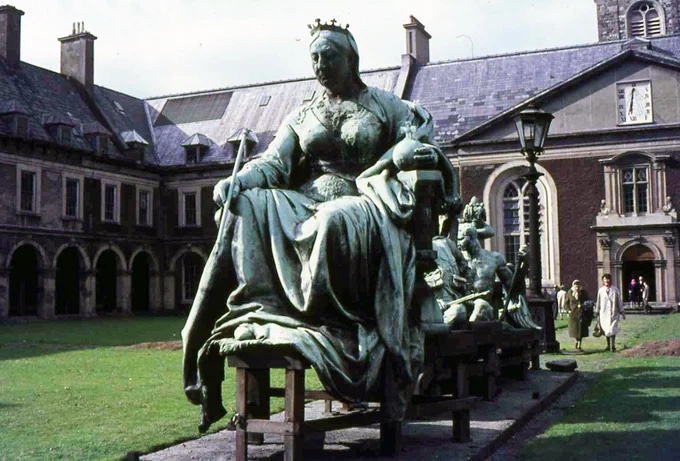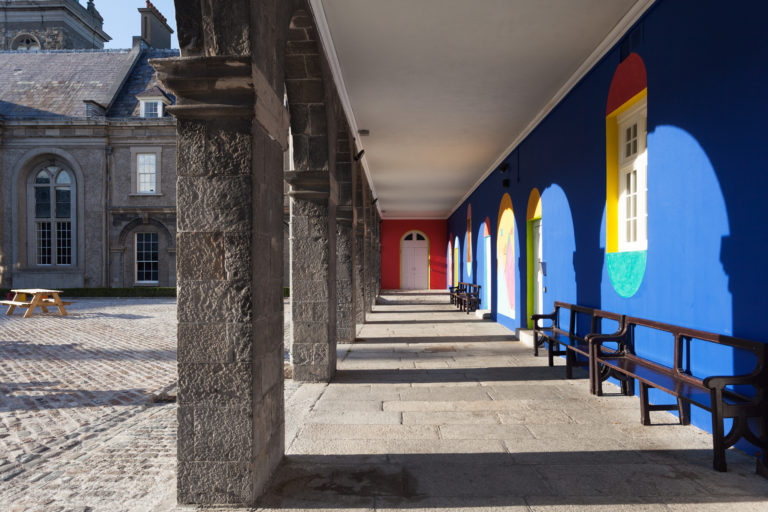Royal Hospital
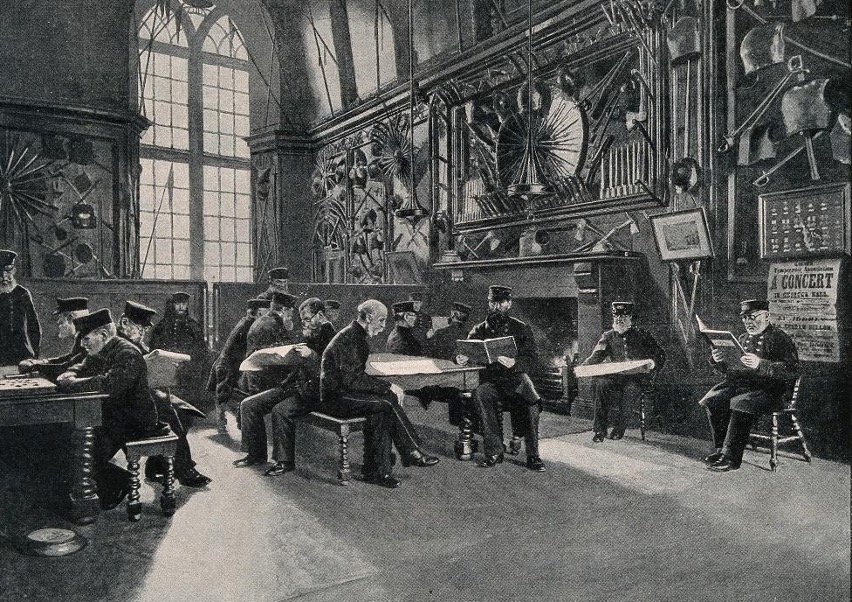
The Royal Hospital Kilmainham was built between 1680 and 1684 to accommodate aged and invalided soldiers that no longer had the means to support themselves when their ability to serve in the Crown Forces came to an end. Many of these former soldiers would turn to begging and were prone to acts of public violence and anti-social behaviour. In order to solve this growing social problem, institutions like the Royal Hospitals of Chelsea and Kilmainham were needed to give shelter, comfort and purpose to the lives of these former soldiers. A site was selected on the south side of the Liffey within the boundary walls of the Phoenix Park, that originally occupied both sides of the river. The King’s deer park had been established in 1662 on land that had been the property of the Knights Hospitaller and confiscated by the Crown during the dissolution of the monasteries under the rule of Henry VIII.
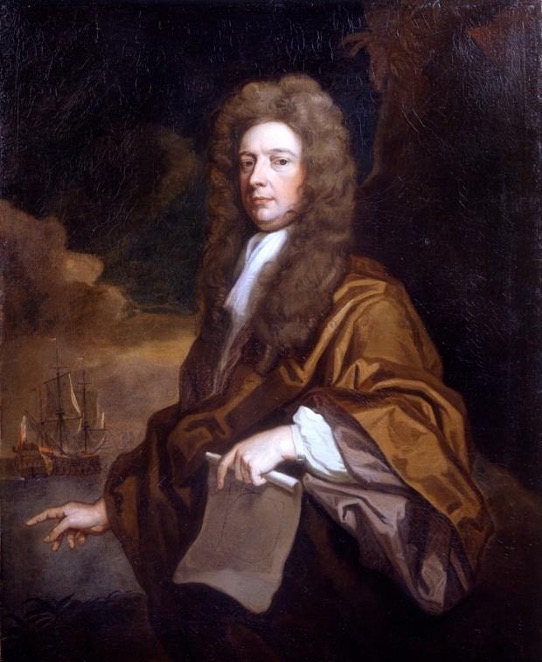
The surveyor General William Robinson was responsible for the design and construction of the hospital, selecting the most eastern part of the 110 acres allocated to the hospital demesne, as it was closest to the city. Designed to accommodate 250 men. At its peak occupancy the Royal Hospital housed more than 500. The design includes elements that might be found in a medieval monastery with a cloister, great hall and a chapel, but it also incorporates new and modern elements of enlightenment design that included running water and indoor plumbing. The building is the first example of a baroque, neo-classical building, built in Ireland and is an architectural marker that indicates the transition of Dublin from a late medieval to an early modern city. It is the first time a formal institution was developed to address a specific social problem. It was shortly followed by its own infirmary in 1864, that served largely as a bedlam asylum, and in 1706 the first house of industry and later the foundling hospital was built nearby on James’ Street to incarcerate the destitute, the homeless and abandoned children.
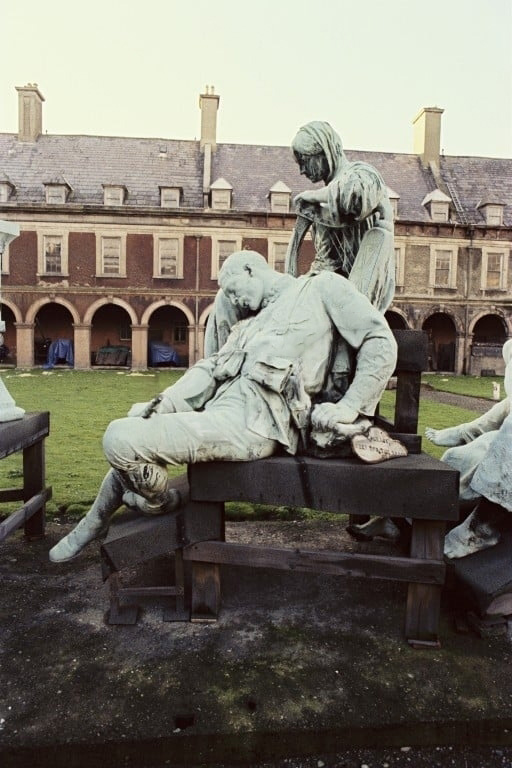
The Royal Hospital operated between 1684 and 1922 when it was handed over to the Irish Free State. In 1923 it was proposed as a location for the Oireachtas, the Irish Free State parliament, with extensive drawings completed by OPW architect T.J. Byrne. However, this never came to pass and the final pensioners did not leave until 1927. Shortly after this the Irish police force An Garda Siochana took over and made it their headquarters. The Gardaí vacated the building in the 1950’s and from then on it was used as a store house for the national museum. The British Statuary removed from the streets of Dublin were also stored in the grounds until restoration work began in the 1980’s. From 1984- 1990 the building was used as a centre for culture and art finally becoming the Irish Museum of Modern Art in 1991.
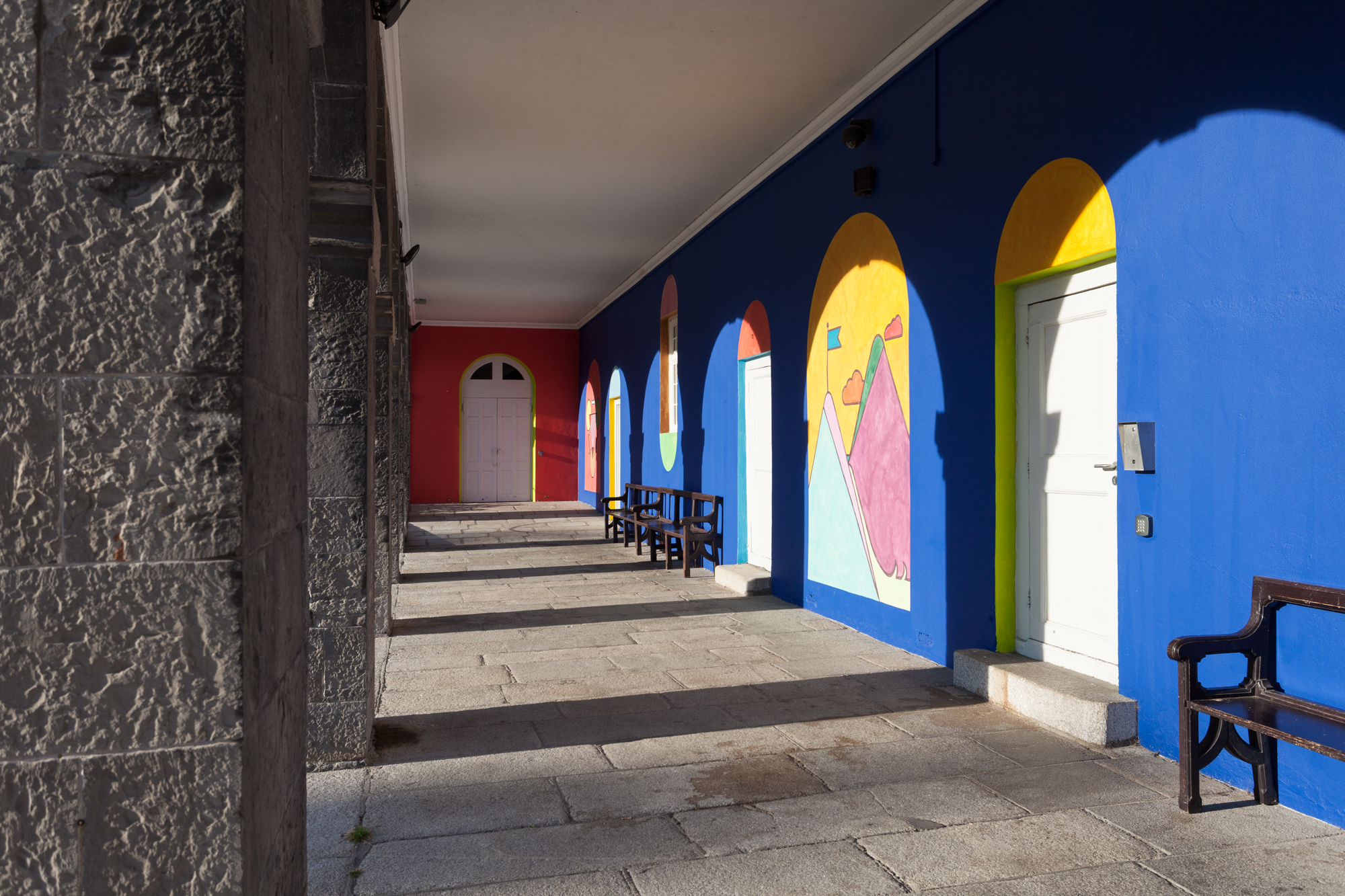
IMMA has been successfully operating in the building and grounds of the Royal Hospital for over 30 years with artists and curators often turning to the site heritage for inspiration. In 2022 Navine Khan Dossos used the building as a support to realise an ambitious new commission for IMMA’s iconic courtyard, titled ‘Kind Words Can Never Die’. The work explores new psychological states that have emerged in response to a greater awareness of global and local climate change.
Supported by
The IMMA Heritage Trail is kindly supported by An Chomhairle Oidhreachta / The Heritage Council and the Office of Public Works. OSI Historic map details are provided courtesy of Tailte Éireann.



![Gallery thumbnail. [Pensioners in the Great Hall, Army and Navy Illustrated]](https://imma.ie/wp-content/uploads/2023/08/Pensioners-in-the-Great-Hall-Army-and-Navy-Illustrated--768x543.jpg)
